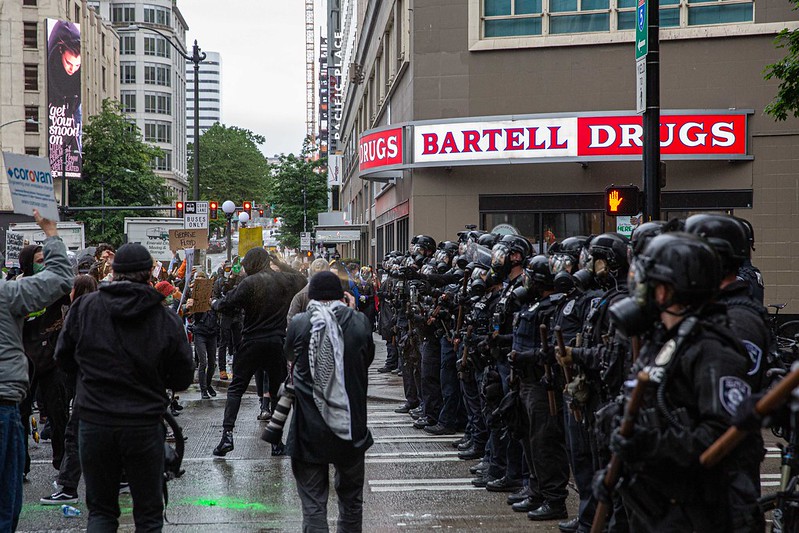Benedict Anderson in his critique on nationalism and racism stated that ‘nation’ is a human construct upon which human beings base their imagined communities. Nationalism, race, and ethnicity have played a significant role in shaping twentieth-century politics and conflicts. Hence, “the twentieth century has belonged to nationalism” arrived in the last century. As Milton Esman suggested, ethnicity is by no means a modern future. Throughout history, communities based on common descent, culture, and ambition have gathered together in solidarity. However, in the twenty-first century, the idea of ethnicity is also changing.
By Aziz Patwary
The much discussion on ethnicity suggested that ethnic horizons are more existent on the state borders, meaning the underlying borders separate different ethnic groups based on national identity, race, and language. Brubaker takes one step forward by suggesting ethnicity may not require any borders as such in contemporary times. The groups can be politically mobilized, culturally attuned, economically mobile, and collectively action-prone crossing borders and managing a hyperspace.
Perhaps a more intriguing example of this change could be the 59-day streak populist movement– Occupy Wall Street of 2011. It was a leaderless resistance movement that curved across different colors, genders, and racial identifications and was directed against economic oppression and elitism on Wall Street. Moreover, it quickly turned into the movement of the 99 percent by reinventing activism in an emboldened generation by pointing out widening inequality, racial justice, and democratic defense. The absence of any central leadership and the horizontality of such a movement force also inherits an anarchic nature of populist political movements.
One must distinguish the anarchy (the absence of state or government) from the anarchic forces that define modern-age political movements. For instance, Black Lives Matter, We are 99%, Occupy Wall Street, and #MeToo all refer to a new wave of political resistance that harbors no signifying leadership to lead the mass. There are underlying anarchic forces which is the concern here. The Occupy movement though was not ideologically anarchist but exhibited a commitment towards anarchic elements or forces such as denying financial authority, lacking central leadership and mass-resistance mobilization, etc.
The act to engage in politics or political resistance does not start from the road rather it originates in people’s minds. Research on social and political movements suggests the people’s act to resist is an expression of latent fear or aggression which finds an outlet through mass-political expression. These emotions and feelings play an important role in actor mobilization and facilitating political communication among people.
In a consumer society of individualism, garnering alienated feelings among individuals has become more easier hence the term ‘crowd psychology’ or ‘mob psychology’ emerges. For example, in January 2021, intrusion of the Washington Capitol by Trump-supporters illustrates the fact that identity, emotions and diffusions of responsibility altogether create affinity among people to come to the streets. The desire to seek a retribution to a wrong or seeking justice from the government in a vengeful way also accounts for ‘mob justice’ if not checked can often result in unintended consequences.
The elections can be one of the endangering moments for such anywhere. The ruling party, and opposing parties both try to utilize ample opportunities to garner forceful feelings to increase their voting pools. How groupism and political behavior function in critical times such as election, crisis and war-prone are major discussion topics among political scientists. For example, India’s Kerala local election has become a thorny battlefield for both Congress and United Democratic Front. Congress was accused of using groupism within the party to push aside any electoral candidates from the UDF. Centering upcoming elections in Bangladesh, the political battle between the Awami League and the BNP has also increased the chances of street movements and street violence in recent times. The recent Dhaka-17 election, albeit local, has experienced violent moments from the ruling leaders against an individual candidate, Hero Alam. The local attack over him exposes not only the election violence but also the infiltrated rage of mob moments within a certain group.
Not to mention such violent clashes have also become frequent among the Awami League and the Bangladesh Nationalist Party (BNP) supporters recently. There have been instances of scattered clashes in the BNP political meetings of Chattogram and Dinajpur. Though BNP claims to strategically conduct peaceful rallies, the fear exists that such conduct may not be peaceful later. The key takeaway is that the chances of political violence are highly likely in upcoming times in Bangladesh due to the election period as has always been in any election period in Bangladesh.
In line with this, the clash between police and opposing parties has also increased in recent times. Dhaka Metropolitan Police (DMP) claimed to have arrested 90 protesters in a July political clash where 20 police officers were also injured. Not only in Bangladesh, police forces all over the world are acting with excessive force more than in any other time in history. The excessive force is directed against the public to the extent the crisis has been ‘a public crisis’. In the USA, Europe and other developed parts of the world protests are not peaceful anymore, and police are now ready to spill out blood without hesitation if necessary
The intermittent street movements and protests perhaps will be more regular in Bangladesh due to the election period. Such political acts of violence have an uneasy relationship between groupism, political parties, and police forces. However, the caution should be on the unintended consequences that the mob uprisings can lead to and if not checked can lead to public casualties and more political harm than any good.
Aziz Patwary is a Former Employee of the World Bank










